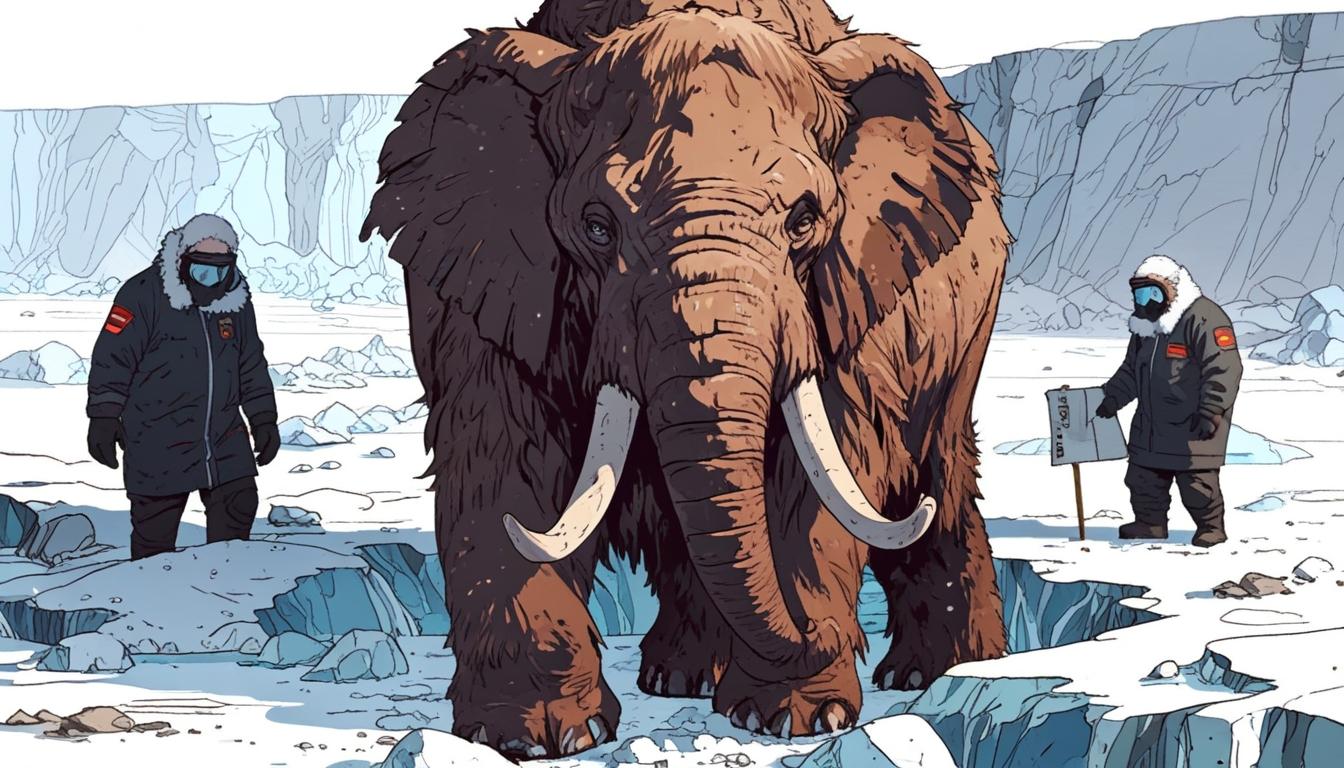International experts convened recently for a training exercise, dubbed Exercise Polaris, organised by the World Health Organisation (WHO). This event took place amidst growing concerns about the potential emergence of pathogens from ancient frozen animals, specifically highlighting a fictional virus named 'Mammothpox' arising from the carcass of a frozen mammoth. The exercise involved participants from 15 countries who were tasked with simulating the containment of this fictional outbreak.
The scenario imagined that a team of scientists and a film crew, who discovered the frozen mammoth, became infected by this deadly virus, which is conceptually akin to smallpox and closely related to monkeypox, also known as mpox. The mortality rate of Mammothpox was designed to reflect the serious nature of such pathogens, as is the case with smallpox, which had a historical mortality rate of approximately 30% before its eradication in 1980. The potential for this new virus to spread globally was a central concern during the two-day exercise.
Dr Khaled Abass, an environmental health sciences expert from the University of Sharjah in the UAE and co-author of a related study, emphasised the real dangers posed by climate change in releasing ancient parasites and microbes trapped in permafrost. "Climate change is not only melting ice—it's melting the barriers between ecosystems, animals, and people," he stated, as reported by the Daily Mail. This further underscores the seriousness of the matter, where previously dormant pathogens may pose new threats of zoonotic diseases capable of jumping from ancient animals to contemporary species, including humans.
The WHO documentation associated with Exercise Polaris elucidated the significant risks of viral re-emergence due to thawing permafrost. The concern stems from previous scientific findings indicating that ancient viruses can remain viable in permafrost for millennia. The exercise was not only an academic simulation; it reflected increasing worries, as noted by various scientists, that as the planet warms, the opportunity for these ancient pathogens to surface grows.
Among the nations involved in this training were representatives from Denmark, Somalia, Qatar, Germany, Saudi Arabia, and Ukraine. Each country was given distinct information about their respective outbreak scenarios, which aimed to evaluate their collaboration and information sharing during a crisis. Scenarios included situations such as an outbreak on a cruise vessel or within confined groups, revealing the varied strategies nations may adopt to control disease spread.
The exercise also highlighted the potential complications of international cooperation in real-life situations, citing current events where countries have opted for divergent health strategies, such as border closures or lockdowns. Participants underlined the challenges posed by political factors, stating these could hinder a unified response during a pandemic.
In the Arctic, the risks are amplified due to limited health monitoring services, which can complicate the identification and containment of zoonotic diseases. Research has indicated that pathogens like Toxoplasma gondii are already spreading in the region, contributing to an increasingly complex health landscape.
In addition to Mammothpox, Exercise Polaris briefly outlined other potential ‘zombie viruses’ that could emerge from permafrost. These include strains of influenza, and various viruses such as Pithovirus sibericum, revived from 30,000-year-old samples, and pathogens found in wool from frozen mammoths. The Arctic environment, now becoming more accessible due to thawing ice, poses further risks as scientists and poachers alike seek ancient animals preserved in ice, with ramifications for both scientific research and biodiversity.
Over the last decade, research has demonstrated the historic viability of viruses stored in the Arctic, confirming incidents where anthrax spores were released from permafrost in 2016, causing hospitalisations and fatalities. Such occurrences stress the need for preparedness in the face of climate-induced changes that could unlock ancient diseases.
The exercise concluded with the realisation that while containment of an outbreak like Mammothpox could theoretically be achievable, actual scenarios would likely present a multitude of unpredictable challenges that require robust international coordination and cooperation.
Source: Noah Wire Services
